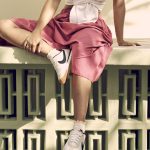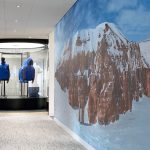Product quality lags behind selection and price as primary motivators for consumers purchasing sporting goods, according to a recent study released by Vertis. The firms Customer Focus 2004 report also confirms some long-held beliefs about the difference between consumers that shop at athletic specialty stores versus sporting goods stores and discount stores.
According to the Vertis study, 54% of athletic footwear consumers surveyed that shop at a specialty store say they shop there based on selection first. Price was the motivating factor for 18% of those consumers while only 7% looked to quality first.
This certainly supports the mall shift phenomenon we have seen over the last year after Nike pulled marquee product from Foot Locker and boosted allocations to The Finish Line, Journeys, and the urban guys. Finish Line quickly became better known by the mall kids for their selection, a shift that has seen them post strong double-digit gains each quarter for the last year while Foot Locker ekes out low-single-digit gains to declines in the U.S.
Foot Locker must see the same trend and has reportedly worked closely with Nike to get back into the coveted marquee goods that get the mall consumer in the door.
Some look to the Footaction acquisition as one way for Foot Locker to regain some of that fashion share, but Foot Locker management appears to be focused on recapturing its former position as the leading destination for the latest and greatest in athletic footwear.
The report showed that 43% of the coveted 18- to 34-year-old male consumers surveyed looked to athletic specialty stores for athletic footwear, a number we would expect to be even higher for the highly targeted 12- to 24-year-old age group. Only 8% of that same demographic group purchased athletic footwear most often from a discount store.
“When purchasing athletic footwear at a specialty store, selection has the greatest influence on a shopper's behavior,” says Therese Mulvey, vice president marketing research at Vertis. “The results of the study show that consumers want choices and variety at a good price. A key tool in influencing buying behavior is advertising inserts and Customer Focus can provide guidance on the best way to use media synergistically.”
This point that selection is the key motivator for this demographic loses steam with female consumers and younger consumers when product may be purchased by Mom. According to the survey, female shoppers with young children (ages 6-11) also see quality as less important than price in terms of being a key factor on why they shop at athletic specialty stores.
The study indicated that roughly 32% of women respondents with children aged five or younger said they most often purchase athletic footwear at an athletic footwear specialty store, compared to 15% who shop at a discount store. For those women surveyed with children between the ages of six and eleven, 35% said they shop at specialty stores based on price, compared to 9% who shop there based on quality.
So while Mom prefers to shop at the specialty locations, she is probably thinking about the needs of her brood as well, a statistic that many mall retailers havent yet seized on as they target more female consumers. Yes, we have all seen the womens numbers increase at a number of these mall locations, but one could argue that much of that trend is really fashion, driven by Shox, and represents a younger single woman.
While few of the 18- to 34-year-old male respondents in the survey looked to the discount store for footwear, that same group was more likely to purchase sporting equipment from discount chains like Wal-Mart, Kmart or Target. While 51% of this group looked primarily to sporting goods chains for equipment, 19% said they most often make these purchases from a discount store.
The people that shopped at sporting goods stores were also more likely to rely on advertising circulars to make their buying decisions rather than newspaper ads. They are also more likely to assume that the prices advertised in the circular are discounted, which may be the primary driver for their purchase at the sporting goods store.
The survey showed that 29% of total adults surveyed who are sporting goods shoppers for athletic equipment said advertising inserts most influence their buying decisions, compared to 18% who said ads in the newspaper most influence their buying decisions. Of the advertising insert readers surveyed, 62% of those sporting goods shoppers said they assume an item's advertised price in an insert or circular are discounted and on-sale prices.
While this study may give a retailer a better idea on what drives a consumer into their store, another study from Kurt Salmon Associates in late 2003 indicated that 69% of consumers say they feel retailers do not put their needs first. There is a serious disconnect between what consumers need and how they want it, and what retailers offer.
“To bridge this gap,” says KSA strategist Madison Riley, “successful retailers and suppliers must mine sources of consumer intelligence — demographic and psychographic research — to determine how to become the first and foremost shopping destination for their target consumers.”
The KSA study said that marketers are failing to meet consumers' needs with their product offerings, with 73% of consumers indicating that when they see an item they like, they usually purchase it immediately.
>>> The data appear to show that consumers can be influenced by a number of factors to get them into the store, but they purchase based on how the retailer delivers once they get there, which builds retail loyalty. Advertising will get them there, but knowing who they are before they get there and having the right product will keep them coming back…














